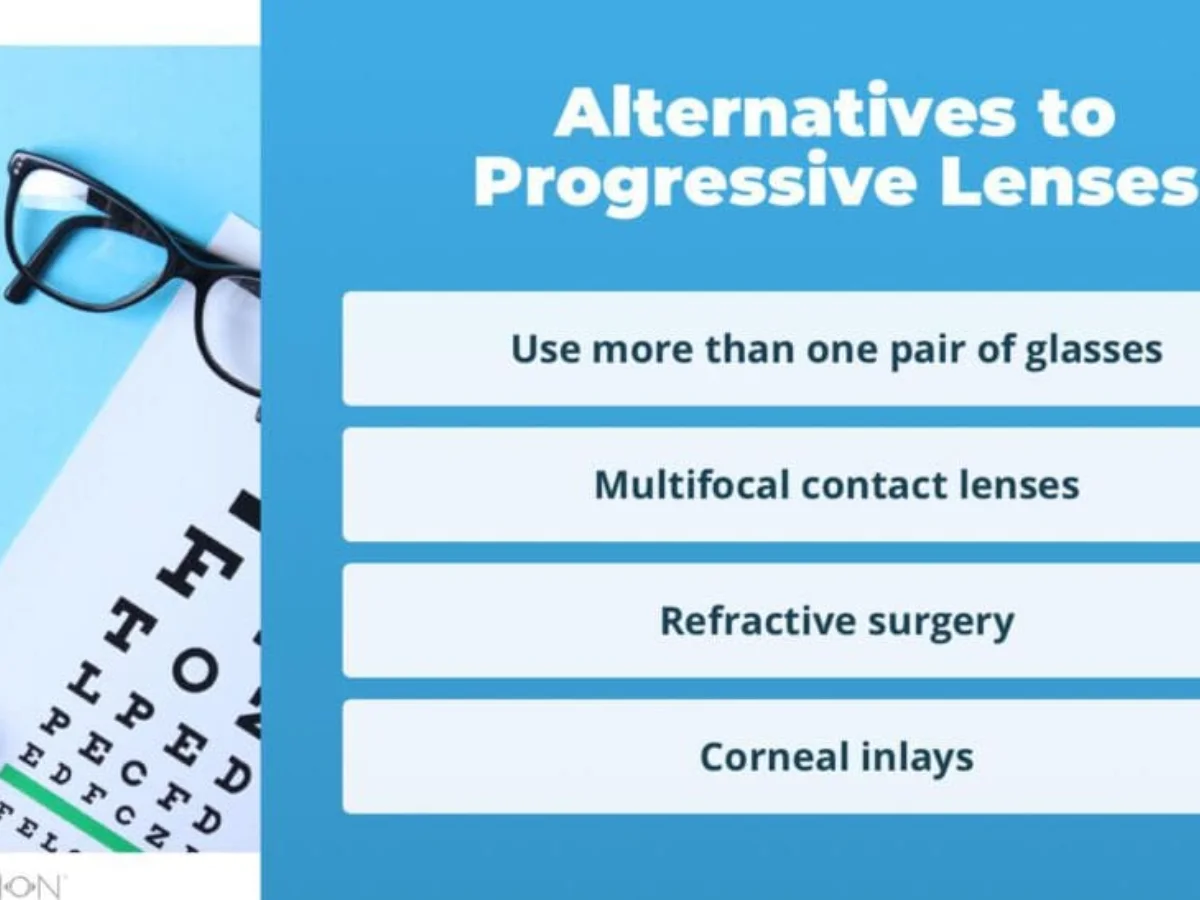Progressive lenses have been a revolutionary solution for individuals with presbyopia, offering seamless vision correction at various distances. However, they might not be suitable for everyone due to their specific design and potential discomfort during adaptation. In this guide, we’ll explore alternative options to progressive lenses, ensuring that you find the perfect eyewear solution for your needs.
1. alternatives to progressive lenses
As we age, our eyesight changes and presbyopia becomes a common issue, making it challenging to focus on objects up close. Progressive lenses have been a popular choice for addressing this issue, but they may not suit everyone’s preferences and needs.
2. Understanding Progressive Lenses
Progressive lenses, also known as multifocal or varifocal lenses, provide a seamless transition between different prescription strengths, allowing wearers to see clearly at varying distances without the need for multiple pairs of glasses.
3. Limitations of Progressive Lenses
While progressive lenses offer convenience, they come with some limitations, including:
- Initial Adaptation Period: Some individuals find it challenging to adapt to the progressive lens design, experiencing discomfort or distortion.
- Peripheral Blurriness: The peripheral areas of progressive lenses may have some blurriness, affecting peripheral vision.
- Cost: Progressive lenses can be more expensive than traditional single-vision lenses.
4. Alternative Vision Correction Options
4.1. Bifocal Lenses
Bifocal lenses feature two distinct prescription strengths in a single lens, typically for near and far vision. They lack intermediate vision correction.
4.2. Trifocal Lenses
Trifocal lenses offer three prescription strengths, addressing near, intermediate, and far vision. They can be a suitable alternative if you need clear vision at multiple distances.
4.3. Single Vision Lenses
Single-vision lenses provide clear vision at a specific distance, either for near or far vision. You would need multiple pairs of single-vision glasses for various tasks.
4.4. Monovision Contact Lenses
Monovision involves wearing a distance prescription lens in one eye and a near prescription lens in the other. It’s a common approach for contact lens wearers.
4.5. Reading Glasses
Reading glasses are designed solely for near vision and can be a practical solution for presbyopia.
4.6. Multifocal Contact Lenses
Multifocal contact lenses function similarly to multifocal eyeglasses, offering clear vision at multiple distances.
5. Choosing the Right Option for You
Consult with your eye care professional to determine the most suitable alternative to progressive lenses based on your lifestyle, visual needs, and comfort preferences.
6. Benefits of Exploring Alternatives
- Customized Solutions: Exploring alternatives allows you to find eyewear tailored to your specific vision requirements.
- Comfort: Some alternatives may offer a more comfortable and quicker adaptation process.
- Cost-Effective: Depending on your choice, alternatives can be more cost-effective than progressive lenses.
7. Frequently Asked Questions
Q1: Are alternative options as effective as progressive lenses?
A1: The effectiveness of alternative options depends on your individual needs and preferences. Some alternatives may offer better comfort and clarity for specific tasks.
Q2: Can I switch between different alternative options?
A2: Yes, you can switch between different eyewear options based on your daily activities and visual requirements.
Q3: Do alternative options require a prescription?
A3: Yes, most alternative options, such as bifocal or trifocal lenses, require a prescription from your eye care professional.
Q4: Are there age restrictions for using alternative options?
A4: There are typically no age restrictions for using alternative options; they are suitable for individuals of all ages.
Q5: How do I know which alternative option is right for me?
A5: Your eye care professional will conduct an eye exam and discuss your lifestyle to help you choose the most suitable alternative option.
8. Conclusion
While progressive lenses have been a valuable solution for presbyopia, exploring alternative options can provide you with customized eyewear that addresses your specific needs and preferences. Consult with your eye care professional to determine the best alternative for you, ensuring optimal visual comfort and clarity in your daily life.
Read more: https://www.rozyjos.com/
More Related:
Progressive Roadside Assistance vs. AAA: Which One Is Right for You?
Why Is Progressive So Much Cheaper Than Geico?
What Is Meant by Progressively Responsible Work Experience?
Exploring the Most Progressive Cities in the Southeast
Does Progressive Report to Carfax?

